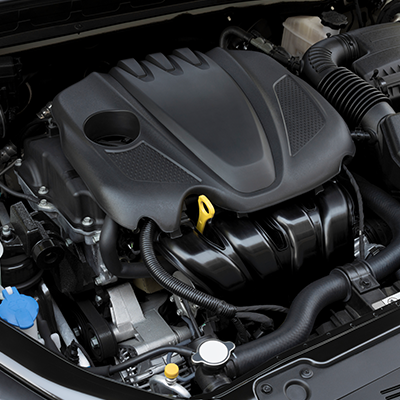Engine valve replacement

The four-stroke engine has the following strokes (full travel of the piston along the cylinder): intake, compression, combustion and exhaust. The valves control the flow of the air-fuel mixture into the cylinder and remove the exhaust gases generated in the combustion process. A valve is comprised of a stem and a head, and is exposed to extreme temperatures and pressures. A common cause of a valve failure is its burning out as a result of wrong conditions or parameters of operation or mechanical damage caused by a chain or belt malfunction or a collision of the pistons with the valves. In the latter case the engine may suffer a total damage.
Tips
- New valves are not expensive but their replacement is complicated and time-consuming
- When replacing the valves remember to have the valve lash adjusted
Scope of services
- Dissembling the cylinder head
- Replacing the valves, guides and seals
- Reconditioning the cylinder head and replacing the cylinder head gasket
- Refitting the previously removed elements
Find a car workshop
Check out our workshops that offer the service engine valve replacement in some of the biggest cities in your country
Additional info about the service
What are valves?
Valves are responsible for allowing the fuel-air mixture into the cylinders and for removing the spent gases. Their opening and closing time is regulated by the valve control mechanism, i.e. the camshaft driven by a belt or chain connected from the crankshaft, as well as cams and rocker arms.
When should valves be replaced? **
If valves burn, suffer from mechanical damage or their stems wear out, they must be replaced.
How are valves replaced?
Replacing valves requires removing the cylinder head from the engine block. Next, the head is disassembled on a special stand. When changing valves, remember to have new seals and valve guides installed. You should also inspect the hydraulic tappets.
Before fitting the cylinder head with new valve components on back in the engine bloc, it must be checked for leaks and, if necessary, its surface should be subjected to mechanical processing to ensure that it is perfectly smooth. It is also necessary to fit a new head gasket. The guide and tensioning rollers of the the timing belt should also be replaced.
What else to keep in mind?
If you car is not equipped with an automatic valve clearance adjustment system, you should have the clearance adjusted by means of special plates or adjustment bolts fitted on rocker arms. If carried our correctly, the repair will guarantee proper operation of the timing gear and valve control mechanism.